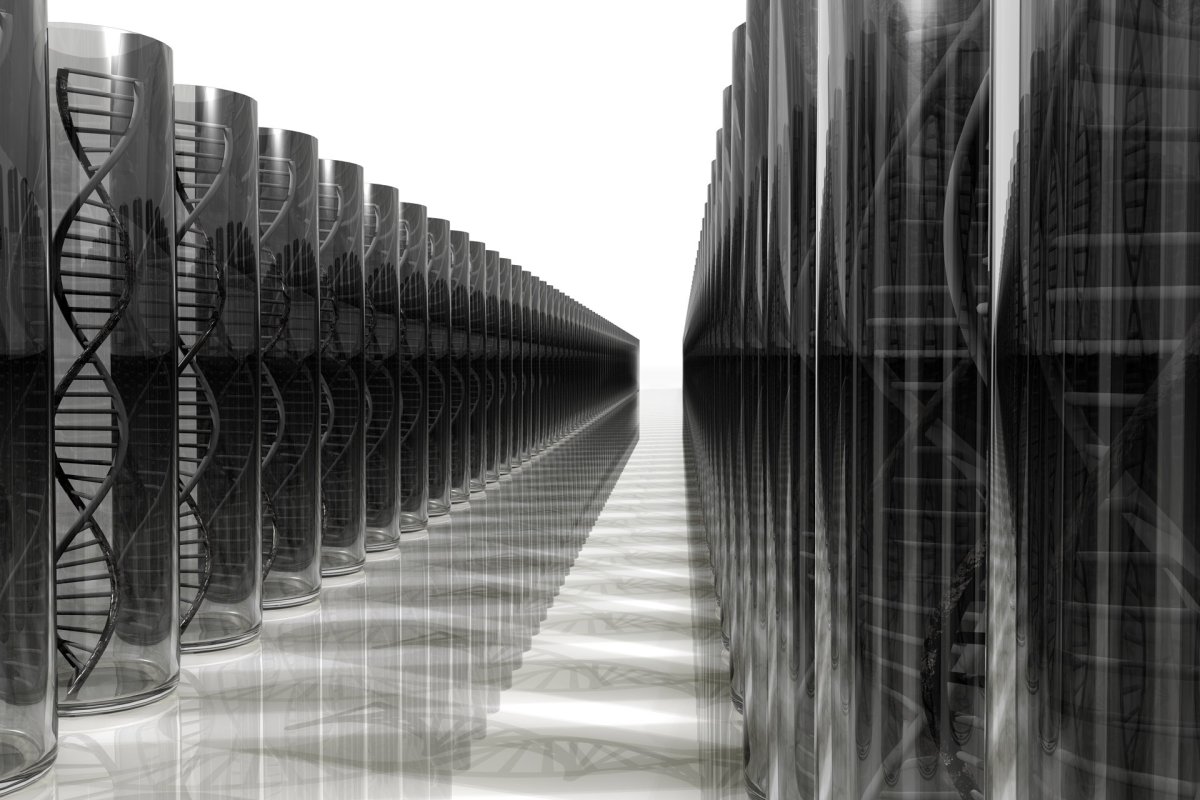Professor Marc Riedel to lead NSF-funded project on DNA computing and storage

A collaborative project led by Professor Marc Riedel to explore alternate applications of a DNA storage system has received a National Science Foundation grant of almost $1million. Titled “Moving Millions of Droplets at Megahertz Speeds: DNA Computing, DNA Storage, and Synthetic Biology on an Industrial Platform for Digital Microfluidics,” research for the project will be conducted in collaboration with technology giant Seagate. Professors Kate Adamala (Department of Genetics, Cell Biology and Development), and David Soloveichik of the University of Texas at Austin will collaborate with Riedel on the academic front. Anil Reddy, Engineering Director of Seagate Research will lead operations on the industrial side of this partnership.
The project is supported by the NSF’s SemiSynBio-III program that funds interdisciplinary research efforts that could significantly impact information storage technologies by using principles from organic systems to fabricate future computing systems and devices. In keeping with that, the program will “foster interactions among various disciplines including biology, physics, chemistry, materials science, computer science and engineering that will enable in heretofore-unanticipated breakthroughs.” More details can be found at the NSF SemiSynBio-III program page (check under Related Content on the right).
On the scope of the project, Riedel says, "Storing data in DNA is an exciting proposition in theory, but very challenging to do in practice. The industrial partner in this project might just succeed, with ground-breaking technology that they are developing called digital microfluidics. Working in concert with the industrial team, the academic team is exploring a range of exciting applications of this new technology."
Centered on the development of a state of the art system for DNA storage, the partnership is particularly significant as it combines the sophisticated storage technology expertise of Seagate with the diverse scientific knowledge and research experience of Riedel, Adamala, and Soloveichik. The molecular structure of DNA, the instruction manual for all life forms, has been the subject of extensive research and exploration because of its potential for information storage. DNA technology, both sequencing and synthesizing, has been steadily trending upwards, and this has inspired the development of novel technologies in the area. Seagate’s engagement in DNA technology is representative of the growing interest.
The project takes off on digital microfluidics (DMF) technology, which although not new has remained relatively underutilized because of challenges of scalability and costs associated with it. DMF works on the principle of electrowetting and can be used to move droplets using electrical signals to carry out biochemical reactions. Existing DMF systems only have hundreds of electrodes that are used to move droplets within a system. However Seagate is working on changing that. Its goal is to develop a system that will have millions of electrodes that can move droplets across an electronic grid at kilohertz speeds. Such a system will allow them to build a DNA storage system that can be used commercially for archival storage. In tangible terms, the company’s goal is to design a system that can write a terabyte of data within an hour at a cost of no more than $50. Moving such a technology from the realm of ideation to a prototype and then to a commercially available device will require multidisciplinary capabilities and expertise.
Given the storage design that Seagate is developing, the team of scientists on the academic side are looking at computing on data that is stored not in the sequence of nucleotides, but in the modifications that are made to the strands of DNA. These modifications are called nicks and toeholds where nicks correspond to breaks and toeholds correspond to the gaps in the phosphodiester bonds that form the backbone of DNA. DNA with such modifications will be assembled directly on the electronic grid surface using the advanced DMF technology from Seagate. In addition to exploring a scheme for computing, the team also plans to explore the application of the technology for synthetic biology applications such as cell-free protein expression, liposome encapsulation, and RNA engineering directly on the electronic grid.
As a SemiSynBio-III project, it resides at the intersection of multiple science and engineering disciplines: engineering (electronic design automation, mechanical engineering), computer science, and biology (molecular and experimental biology). Adamala’s expertise in the field of synthetic biology will explore the use of synthetic cells as biocomputers and bioreactors. As Engineering Director for Seagate Research, Reddy will take on the challenge of developing an electronic design that is capable of handling fluids on a silicon substrate within the context of constraints such as heat dissipation, capillary action, contamination, and others to flawlessly move droplets across millions of electrodes. Soloveichik’s expertise in DNA computing and experience in wet lab experiments with DNA will be critical to addressing the challenge of the combinatorics of DNA sequence design for storage and in-memory computing. Lead scientist Riedel will contribute his expertise in electronic design automation. His experience exploring novel paradigms for computation, particularly DNA computing, will be critical in consolidating the overall research and bridging the various related but different aspects of this undertaking.
Riedel comments on the impact of their work: “We’re developing “in-memory” computing for data stored on DNA. We aim to demonstrate the first example of large scale molecular computing – operating on kilobytes, megabytes and beyond. We are also looking at applications of genetic and metabolic engineering with the technology, all done directly “on-chip” with the digital microfluidics platform.”
The successful rollout of the project will impact experimental biology as well as computing and engineering. It will allow experimental biologists to scale their work by several orders of magnitude, while also significantly expanding data storage possibilities in terms of time and capacity, which is in keeping with SemiSynBio-III program goals. In addition to the scientific and engineering impacts, the project has broader impact goals that address public policy with regard to biosafety, and experiential learning opportunities (such as maker fairs) focused on biological and chemical computation for school students.